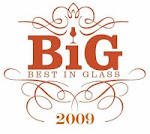Historically the Japanese have been making alcohol for centuries. Most people know of Sake – made from rice, water, and kōji mold Aspergillus oryzae, although it’s origins are unclear.
The earliest written reference to alcohol in Japan is recorded in the Book of Wei, a 3rd century Chinese text which mentions the Japanese drinking and dancing. In 712 we see sake also mentioned as a method of raising a fever for spiritual use in the Kojiki, Japan’s first written history.
According to a number of sources including wiki:
The first alcoholic drink in Japan may have been kuchikami no sake (“mouth-chewed sake”), which is made by chewing nuts or grains and spitting them into a pot. The enzymes from the saliva allow the starches to saccharify (convert to sugar), and then ferment. This method was also used by Native Americans (see cauim, chicha and pulque), and inscriptions from the 14th century BC mention Chinese millet wine (小米酒,xiǎo mǐ jǐu) being made the same way. Though there are various opinions in the start of sake, ancient sake was a basically sticky state of the paste as “neri sake” that remained in Izumo and Hakata now.
In 538 to 710 with the arrival of Buddhism and social change in Japan we see sake as the dominant alcohol.
In the late 794 to 1185 or the Heian period (named after the capital city of Heian-kyō, or now modern day Kyōto) sake began to be used for religious  ceremony and people seldom drank it. Buddhism, Taoism and other Chinese influences were at there height in this period of Japanese history and is considered the peak of the Japanese imperial court; noted for its art of poetry (see waka poets) and literature.
ceremony and people seldom drank it. Buddhism, Taoism and other Chinese influences were at there height in this period of Japanese history and is considered the peak of the Japanese imperial court; noted for its art of poetry (see waka poets) and literature.
Like some modern day Canadian provinces and Sweden sake production was under government monopoly for a long time. However, in the 10th century, temples and shrines began to brew sake, becoming the main centers of production for 500 years.
From 1478 to 1618 records show the practice by this time was that the process of adding ingredients to the main fermentation mash in three stages were established, as was pasteurization.
The Kyushu district, distillation and westerners
Distillation was introduced into the Kyushu district from the Ryukyu Islands in the 16th century and they started brewing/distilling shochu called “Imo – sake,” sold at the central market in Kyoto.
In the 18th century we see written evidence of introduction of whisk’e'y by foreigners; although it is thought that Chinese, Korean and European wines/spirits were entering japan at an earlier period. From 1797 to 1809 Japan limited foreign trade to the Dutch and Chinese at that time, under the policy of sakoku.
n.b By 1797 western countries had been trading with the Chinese from around 206BCE as a part of the silk road.
With the restoration of the emperor Meiji and fall of the Shogun (and Samurai) laws were written that allowed anybody with the money and know-how to construct and operate their own sake breweries. Around 30,000 sake breweries sprang up around the country within a year. This is a turning point in Japanese culture as the western powers start to bring capitalisation.
Matthew C. Perry, on July 8, 1853 arrived at at Uraga Harbor near Edo (modern Tokyo) where representatives of the Tokugawa Shogunate told him to proceed to Nagasaki, where there was limited trade with the Netherlands. The only Japanese port open to foreigners at that point.
Perry refused to leave and demanded permission to present a letter from President Millard Fillmore, threatening force if denied. At this point Perry ordered his ships to attack several buildings around the harbor, threatening to use unrestrained fire if the Japanese refused to negotiate. He also sent two white flags to them, telling them to hoist the flags when they wished a bombardment from his fleet to cease and to surrender.
Perry was prepared for more hostilities if his negotiations with the Japanese failed and the Japanese government was forced to let Perry come ashore to avoid further naval bombardment. Perry promptly landed at Kurihama ( now Yokosuka) on July 14, 1853 presenting the letter to delegates present, and then left for the Chinese coast, promising to return for a reply.
Fortifications were built in Tokyo Bay at Odaiba in order to protect Edo from a possible American naval incursion.
Returning in late March, 1854, with greater fire power the Convention of Kanagawa, “America-Japan Treaty of Amity and Friendship” or “Kanagawa Treaty” was signed between Commodore Perry and the Tokugawa shogunate. This treaty opened the Japanese ports of Shimoda and Hakodate to US trade.
As a Tokens of the trade Perry brought for the Emperor a barrel and 110 additional gallons of American whiskey, which is recorded at the Navy Department Library.
Japanese whisky story continued











Sorry, the comment form is closed at this time.